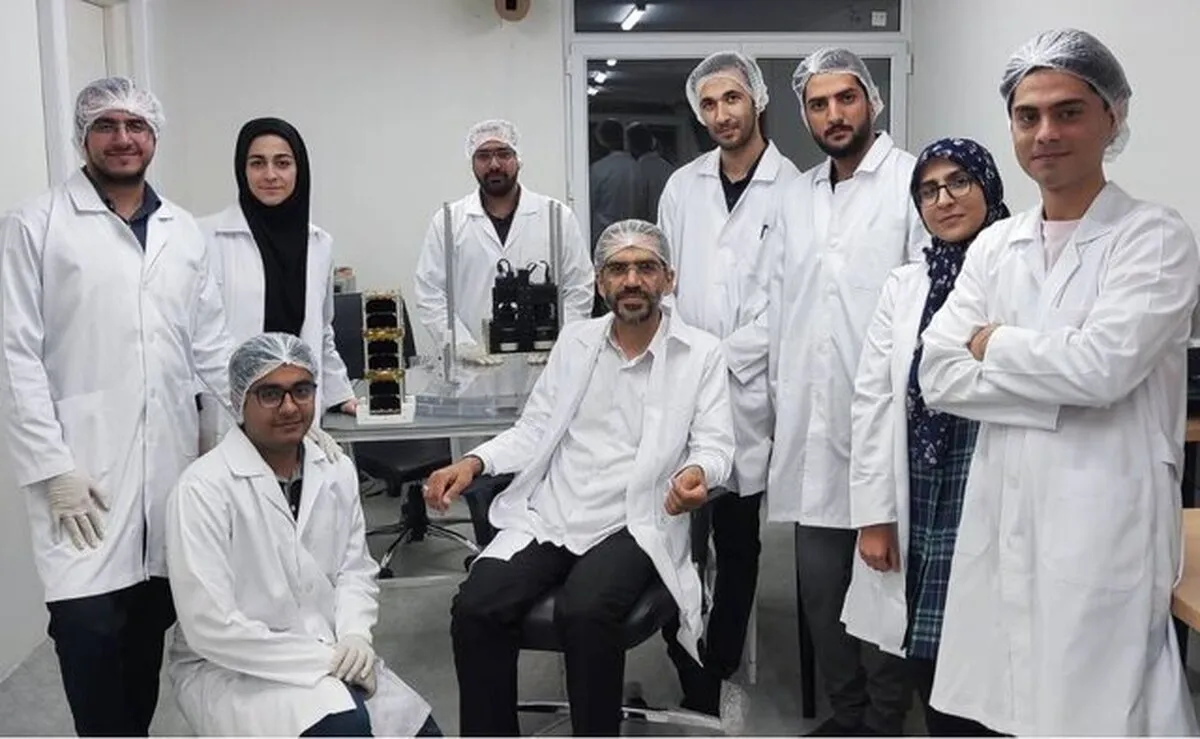Russia to Launch Iran-Made Hodhod, Kosar Satellites into Orbit Early November

“God willing, these two satellites will be launched from the Russian space base on November 5 this year,” Shahrabi Farahani said.
Noting that the two satellites will be launched into the orbit of 500km above the Earth’s surface, he explained, “Kosar satellite is a sensing satellite with a resolution of 3.5 meters. This satellite weighs 30 kg and has a color image width of 15 km.”
Shahrabi Farahani added that the images received from this satellite are proper for agricultural and mapping applications, saying, “The orbital life of this satellite is 3.5 years.”
He described Hodhod satellite as an Internet of Things (IOT) satellite that was designed and built based on the standard of cubic satellites in dimensions of three units (3U), and said, “The satellite can be used in agricultural, transportation and crisis management fields. Hodhod has an orbital life of 4 years and is placed in a similar orbit next to Kosar satellite.”
Iranian scientists at the knowledge-based company had last year succeeded in building Kosar sensing satellite (used in agriculture, mapping and surveying) and the Hodhod narrow band telecommunication satellite (used in the fields of agriculture, transportation and crisis management).
"We seek to construct a satellite constellation that simultaneously performs the two tasks of remote sensing and narrowband communications,” Shahrabi Farahani, the founder and managing director of the knowledge-based company, told ANA in April.
“This system can perform photography and telecommunication missions concurrently. During the completion of the system, images are taken every 24 hours and real-time telecommunication signals are sent to the users,” he added.
“Although countries like the US are pioneering in this field, this plan has no competitors due to the fact that it is due to fulfill two missions,” Shahrabi Farahani said.
Iran is standing among the top 10 countries leading the space industry and among the 7 states leading the bio-space.
Late in January, Iran launched three home-made satellites simultaneously into space.
Mahda, Keyhan-2 and Hatef-1 were three home-made satellites that Iran successfully put into orbit on the back of a single launcher dubbed Simorq (Phoenix).
The three satellites were launched from Imam Khomeini Space Launch Terminal in Semnan province in the Northeastern part of Iran with a minimum altitude of 450 kilometers and a maximum of 1,100 kilometers above the Earth's surface.
Weighing 32 kilograms, Mahda is a research satellite designed and manufactured at the Iranian Space Research Center. It is a lightweight satellite developed to test advanced satellite subsystems.
The performance of Simorq launcher, manufactured by the Iranian Defense Ministry, was assessed by Mahda in multiple injections of space cargo in low altitudes, and the satellite also evaluated new designs and the reliability of indigenous technologies in space.
Hatef-1and Keyhan-2, two cubic nanosatellites weighing less than 10 kilograms, were developed by Iran Electronics Industries, a state-owned subsidiary of the Defense Ministry.
Hatef-1 seeks proving the use of narrowband communication technology in the internet of things (IoT).
Keyhan-2 was made for space-based positioning. It has status determination and control subsystems to aim stably and precisely towards the Earth.
Iran sent its first bio-capsule containing living creatures into space in February 2010, using an Explorer (Kavoshgar) carrier.
Iran launched its first satellite, called Omid (literally meaning hope), in 2009. Rasad (literally meaning observation) satellite was also sent into orbit in 2011.
In 2012, Iran successfully put its third domestically manufactured satellite, named Navid (literally meaning promise), into orbit.
4155/v





















